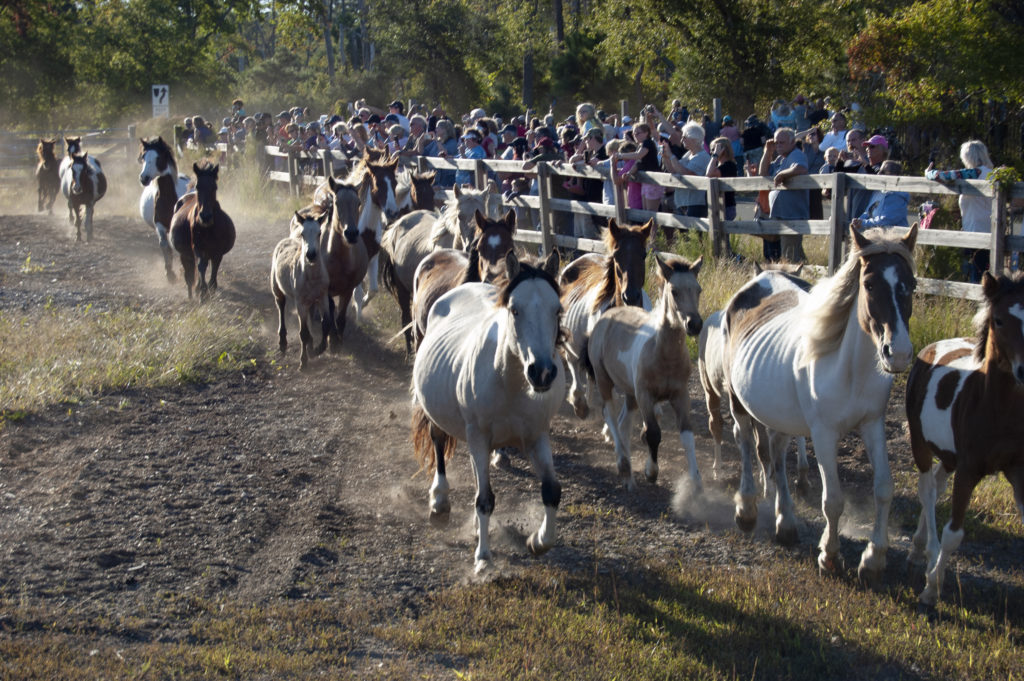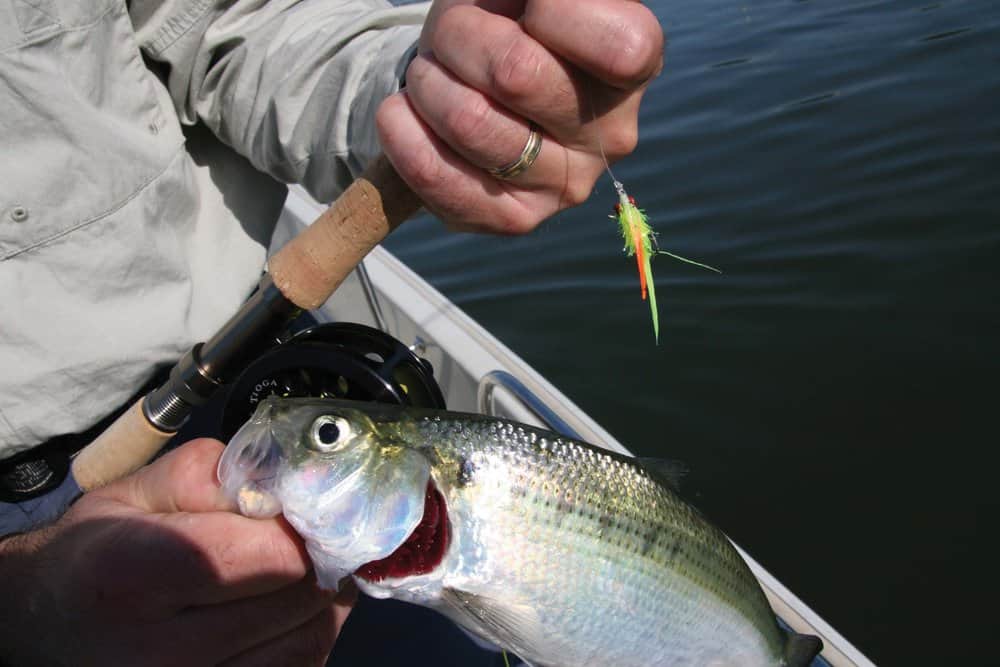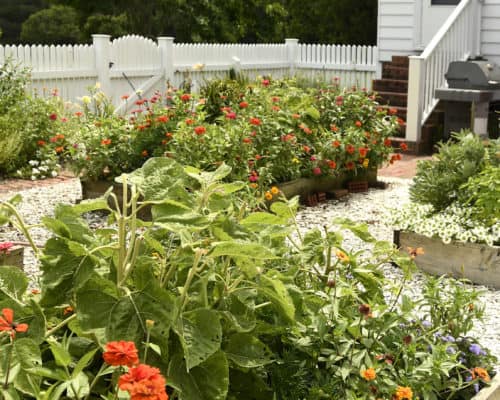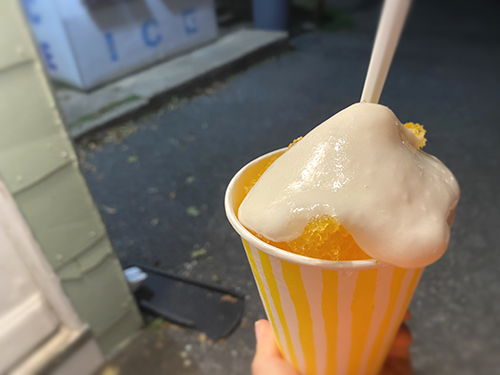A time-honored tradition returns to Chincoteague
When Chincoteague nearly burned down in 1920 after the ice cream parlor caught fire, the pumps failed on the town’s only fire engine. It hadn’t been maintained for years. The inferno destroyed half of the business district, including a large hotel and a bank so recently built it had yet to open.
When Chincoteague almost burned down in 1924 during a howling snowstorm, flames outmatched the citizens again when “a half-effective engine and a bucket brigade” failed to douse a fire at the barrel factory, according to newspaper accounts. The blaze decimated Chincoteague’s oyster industry, leveling shucking houses, warehouses and wharves and causing approximately $300,000 worth of damage.
Twice burned, resourceful residents on this isolated Virginia island weren’t shy: They started a fire brigade at once. Formed in May 1924, the Chincoteague Volunteer Fire Company had 14 able members, questionably operational equipment and four dollars and 16 cents with which to replace it.
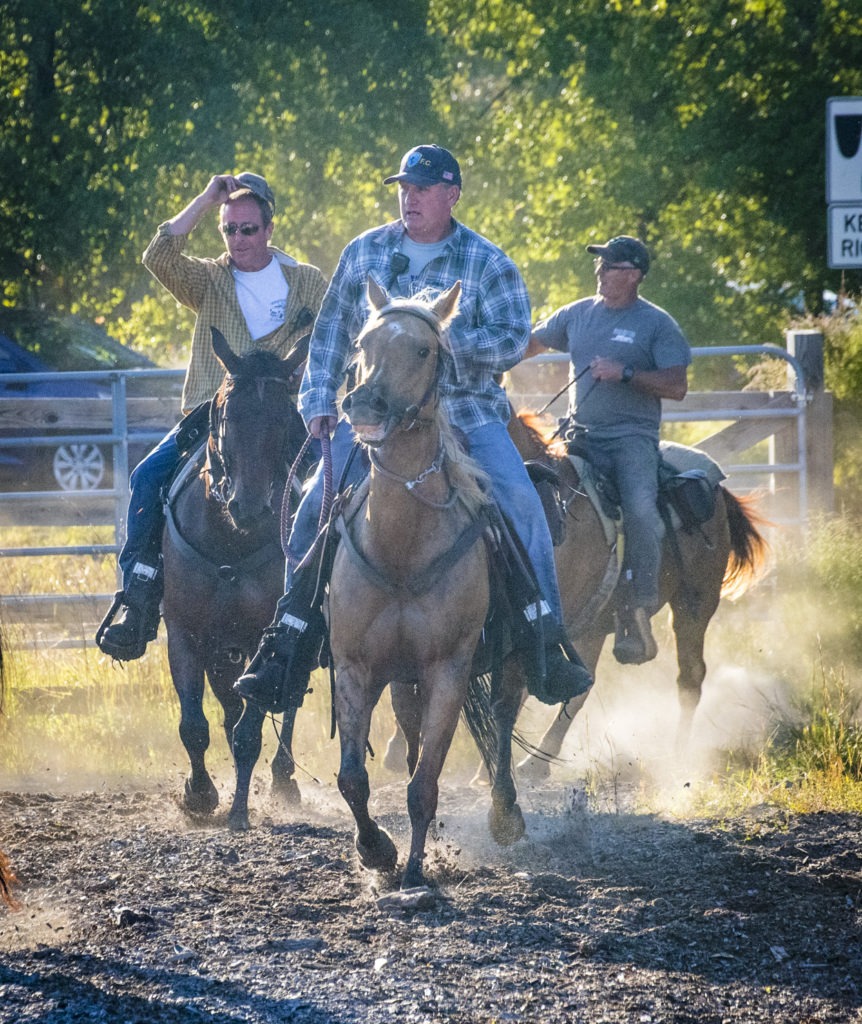
They’ve come a long way since then. Chincoteague Volunteer Fire Company’s spacious new firehouse cost $4 million and change. It sits at the corner of Deep Hole and Chicken City roads and bears an architectural resemblance to the seacoast’s old life-saving stations—with significant upgrades. It houses equipment capable of responding to any fire, as well as the roughly 1,000 medical emergencies the company handles annually. And it takes on special tasks like helping rescue two naval airmen from their partially submerged plane (which firefighters did this March) and delivering food to vulnerable residents ahead of a January blizzard—namely fresh hay for Assateague Island’s wild ponies.
“Chincoteague ponies” and the fire company go way back; the equines arguably financed island firefighting from the get-go. To underwrite fire preparedness in its early days, the fire company turned a centuries-old tradition among islanders—rounding up (penning) feral ponies—into a public, profit-making enterprise that continues still. This July, following a Covid-19 hiatus, Chincoteague Volunteer Fire Company will host its 97th annual pony swim, auction and firemen’s carnival, the organization’s primary fundraiser.
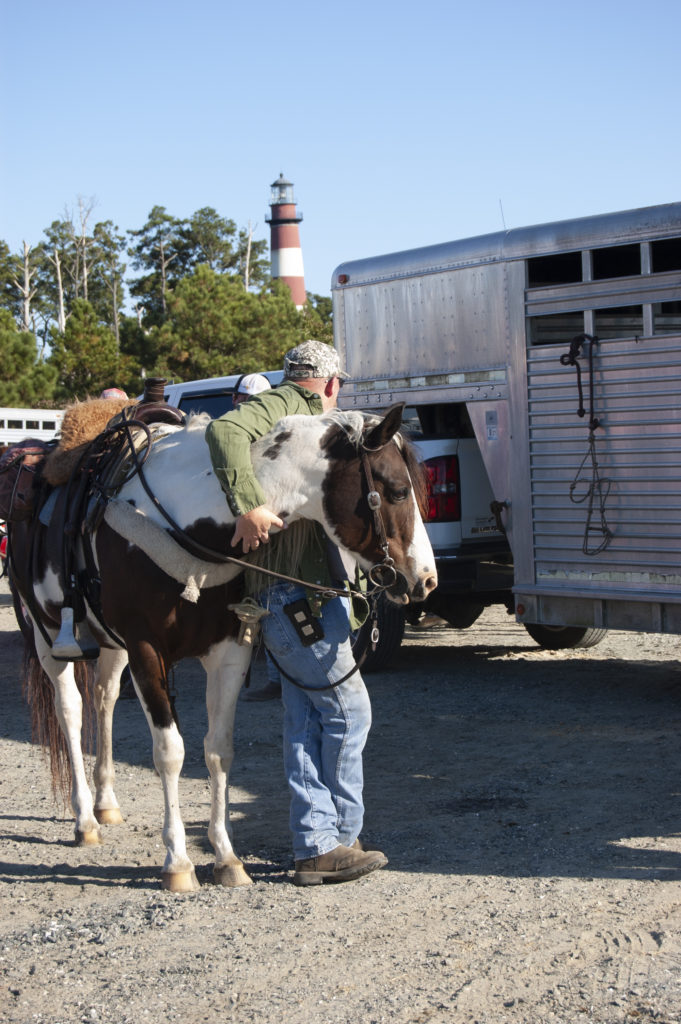
In return for the ponies’ foundational role, the fire company—which owns roughly 150 ponies—gives its herd TLC from a group of dedicated caregivers: an elite mounted brigade of firefighters known as the Saltwater Cowboys.
Ponies are the main attraction of penning week, but the Saltwater Cowboys (their herd-boat brethren are called “scowboys”) are the event’s heart and soul. They worship tradition and their families’ deep island roots. They literally wear their passion on their sleeves—the fire company’s trademarked logo, featuring a prancing pony. And they’re perhaps the nation’s only firefighters responsible for battling blazes, ministering medical aid and herding horses.
They’re perhaps the nation’s only firefighters responsible for battling blazes, ministering medical aid and herding horses.
Each year, they round up the company’s two feral herds on the Virginia portion of Assateague Island and swim the ponies across a narrow channel to Chincoteague. There, on the firefighters’ historic carnival grounds, fuzzy-muzzled foals are auctioned off to the delight of tens of thousands of visitors whose presence subsidizes the fire company (island residents are not taxed for fire services) and replenishes Chincoteague Island’s economy.
“There’s just nothing like it. It’s homecoming,”
Denise Bowden says of “swim week.” Bowden is a Saltwater Cowboy—the only one of her gender—and a deep-rooted Teaguer, as islanders call themselves. She was scarcely a month old when she watched her first equine channel crossing 53 years ago. “Mom and Dad had me out on that boat for pony swim. When those ponies hit the water, that crowd goes about crazy,” she tells me. “I still get chills.”
“Aspiring cowboys must prove themselves worthy: Get involved, help out, show them you’re willing to put in the time.”
– Denise Bowden
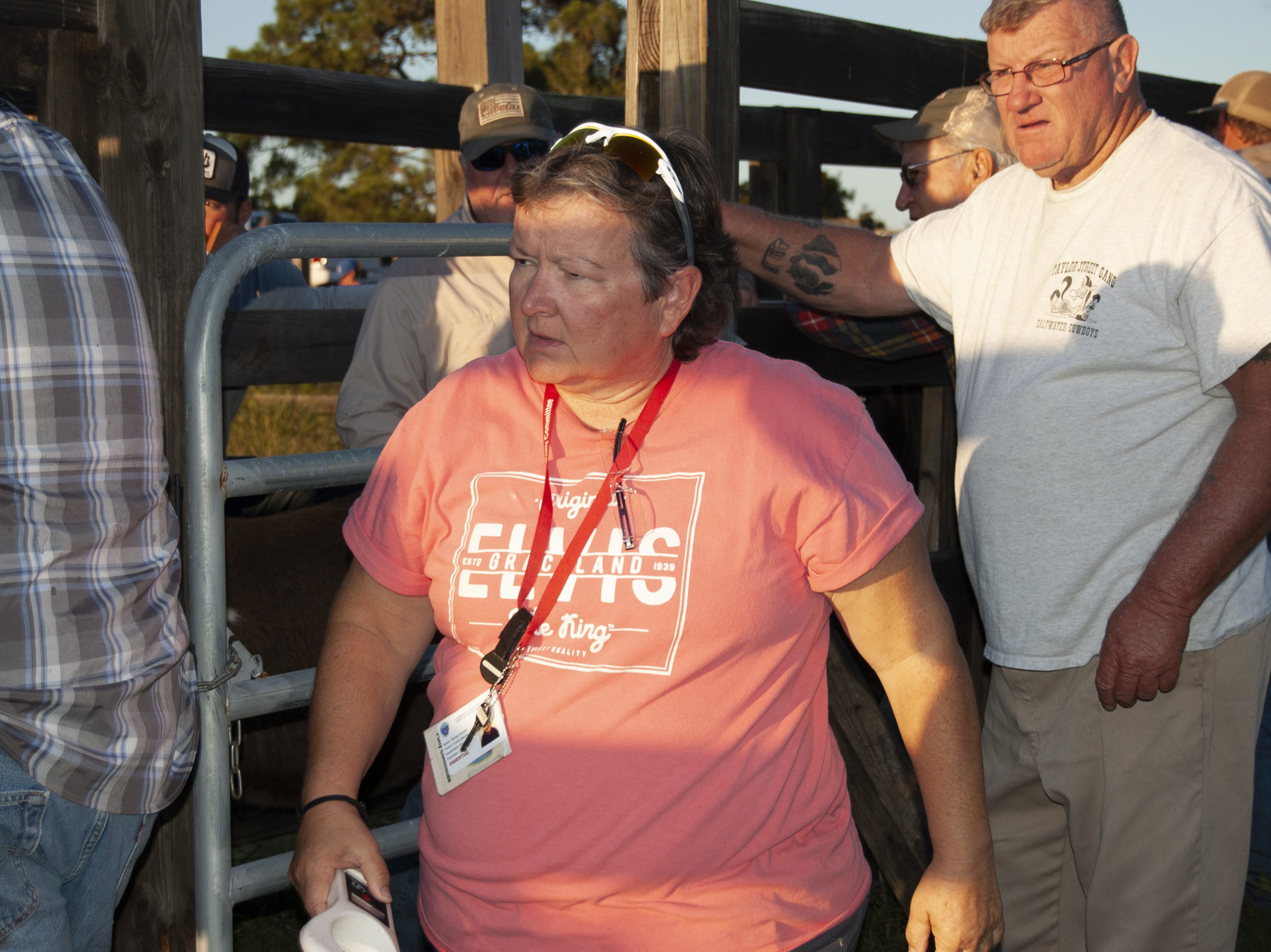
We’re in Bowden’s pickup truck, idling at the McDonald’s drive-through, where she’s grabbing a snack before heading to opening day of the fire company’s 2021 fall roundup. July’s pony swim is the fire company’s headline event, but the cowboys also wrangle Assateague’s north and south herds for veterinary exams in the spring and fall. Over two days, ponies are herded into a corral, where they receive vaccinations, medications and health assessments.
Chincoteague ponies, a registered breed, don’t live on the island for which they’re named—not the feral herds anyway. They stay on Assateague, Chincoteague’s barrier island neighbor to the east. They are indeed pony-sized, about 12 hands (4 feet) at the shoulder. They’re descended from a long line of animals who either escaped from a Spanish shipwreck or were set loose by colonists dodging livestock taxes, depending on the origin story you cotton to.
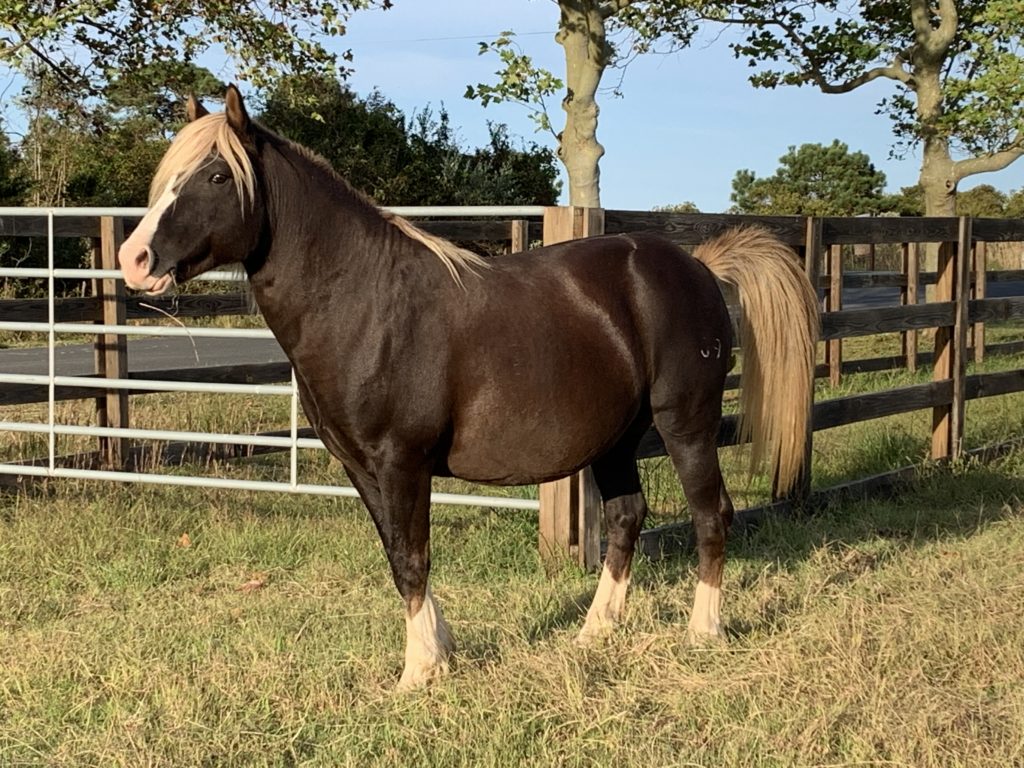
Since at least the 1700s, Chincoteague livestockmen corralled ponies every summer, a ritual celebrated with food, drink and festivity. By the 19th century, the roundup had become a tourism spectacle. Visitors from the mainland rode a “wheezing little steamboat” to Chincoteague to watch the locals pen and brand ponies “as wild as Texas mustangs,” illustrator/author Howard Pyle reported for Scribner’s Monthly in 1877. Today’s tourists drive the four-mile-long Chincoteague causeway to attend the swim and auction, held the last Wednesday and Thursday of July.
Off-season roundups attract far fewer spectators, but on this warm, early October afternoon a sizeable contingent of cowboys shows up. Their horse trailers arrive in dusty clouds at a dirt lot in Chincoteague National Wildlife Refuge, which occupies the Virginia portion of 37-mile-long Assateague Island. In the 1930s—before the refuge was established—Chincoteague’s fire company bought scores of ponies from the estate of their deceased owner, a wealthy businessman who grazed horses and livestock on Assateague. When the federal government established the island refuge, it banished livestock but allowed firefighters to graze up to 150 brood stock ponies under special permit. Today, roughly 100 comprise the northern herd, the rest the southern. (The National Park Service manages—but doesn’t sell—the feral horse population on Maryland’s side of the border.)
More trailers arrive. Horses are unloaded. The cowboys—most dressed in blue jeans, T-shirts, ball caps and cowboy or work boots—prepare their horses, adjusting saddles and coiling braided whips around the pommels. A handful confer with the cowboy in charge, a tall man with horn-rimmed glasses, trim white facial hair and a straw cowboy hat.
Cowboy membership comes not by invitation, but by birthright or hard work. “It’s still a good old boys’ club,” says Bowden, whose grandfather was a member of the fire company but not its hallowed pony committee. She says aspiring cowboys must prove themselves worthy: “Get involved, help out, show them you’re willing to put in the time,” which was her ticket to the club.
Bowden became the fire company’s first woman president, the first woman to chair the carnival committee and the first to serve on the pony committee. She also currently sits on the Chincoteague Town Council and once served as vice mayor. But that’s not her most important role.
“We’ve recognized that, outside of lives and property, ponies are our priority. I spend 10 times more time on the fire company than on the council,” she says. Besides pony committee duties, Bowden is the fire company’s media liaison, social media manager and unofficial spokesperson for the ponies’ head honcho and beloved prima donna, a stallion named Riptide, who communicates on Facebook with his many human fans through Bowden.
“Ole’ Riptide called tonight. Wanted to know what was up with all this wind. Said his mane looks like it’s been in an egg beater and he wants us to send over a stylist,” read one post on the fire company Facebook page. On other occasions he’s complained that newborn foals hog his limelight and that the quiz show Jeopardy dissed him when mentioning the 1947 book that brought Chincoteague international fame, Marguerite Henry’s Misty of Chincoteague. “Trebek would have made this happen for me,” he grumbled via Bowden.
The fire company’s Facebook followers eat it up. An Illinois woman posted that “Riptide love” provided her much-needed cheer. Locals call him handsome and “stud muffin.” They’re equally enamored of their fire company.
“I love this island, the fire department and these saltwater cowboys. It warms my heart to see the care these ponies get on a regular basis,” one follower posted. Others shower cowboys with adulatory emojis: exclamation hearts, blown kisses, folded hands and little pony heads.
They’re appreciative, I’m sure, but the cowboys don’t strike me as emoji-texting types. Bowden introduces me to several, having cautioned that not all of them like to talk to journalists—or provide their names even if they’re chatty.
I meet Gene Merritt, who worked for NASA on nearby Wallops Island, and “Big Tom,” a lanky 74-year-old in a white cowboy hat. He and his buddies drove 200 miles from North Carolina. Three of them are riding in today’s roundup; the others will help with the group’s six horses. They were teenagers when they joined their first roundup, Tom says, sleeping in chicken barns. Later, after many had married, they arranged for nicer quarters. Tom says his ex-wife wasn’t very fond of his pony wrangling. “She’s not around anymore,” he says, as he and Merritt grin.
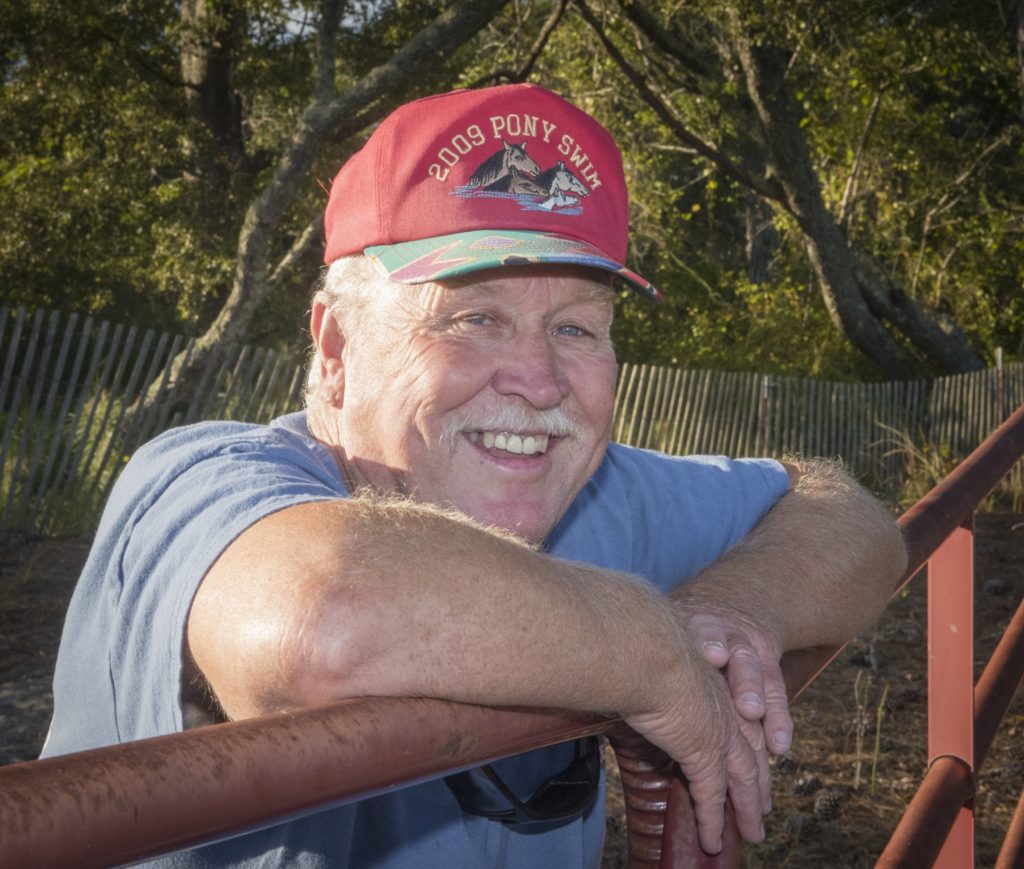
A self-described “semi-retired” corn, soybean and peanut farmer, Big Tom attends the spring and fall roundups and the pony swim in July, when he stays a week. Like all Saltwater Cowboys, he receives no compensation. Why drive hundreds of miles to ride for a couple days? “It’s that shore thing,” he says, shrugging.
The cowboys begin saddling up. As the horses shake their heads, dirt drifts off their coats in the late afternoon sun. The air is filled with the sounds of equine snorts, creaking leather, swishing horse tails and cowboy small talk.
“Hey, what’s goin’ on?”
“I’m leaving next week. You ever shot coot?”
Someone swings open a metal gate. More than three dozen cowboys ride through and form two lines. One group follows the shoreline, splashing through a saltwater marsh. The other heads inland through bayberry thickets toward a stand of scrubby pines. Each group will flush out members of the south herd and drive them to the corral, where they’ll be treated by a vet and released back to the wild, delivered to their buyers (fall “pickups”) or—with younger ponies and ailing adults—get trailered to Chincoteague to spend the winter at the carnival grounds.
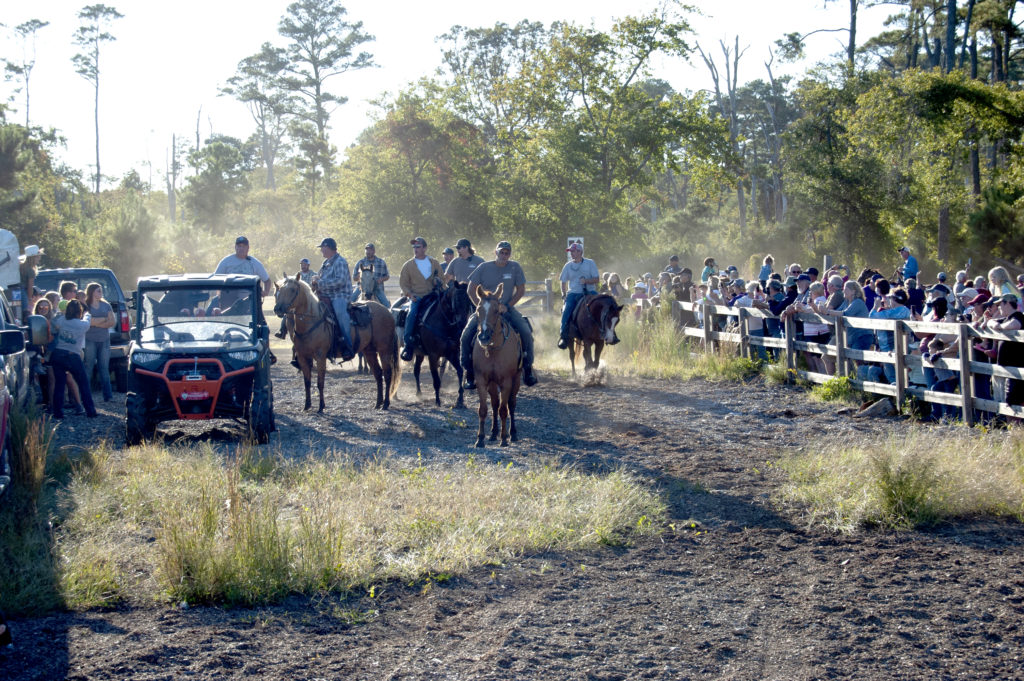
The roundup can take as little as 45 minutes, Bowden says, or two to three hours if stragglers need to be flushed from their hiding places. The saltmarsh group isn’t even out of sight when one horse loses its footing and its cowboy makes a wet landing. He quickly scrambles back into his saddle.
Bowden drives deeper onto Assateague Island to the corral, where scores of spectators have gathered along a wooden fence, cameras ready. In short order, the first ponies gallop over a dune and thunder past: palominos, buckskins, bays and chestnuts, their manes and tails long and unruly, their bellies water-bloated from quenching a thirst that comes of eating saltmarsh grasses. They arrive in three or four waves, followed by the cowboys, who elicit as many cheers as the equines.
For some cowboys, the day is done. For others, the work has just begun. Over the next couple hours, they’ll cajole or coerce each pony along a wooden-fenced corridor into veterinarian George Marble’s “office.” Barely horse-sized, this boarded stall has a swinging door in front and two openings on the sides, one for a cowboy to restrain the pony—with rope if necessary—the other through which Dr. Marble works. A two-by-four slipped through the fence ensures the animal can’t back out.
If the patient is cooperative, Marble lifts the pony’s head, opens its jaws and squirts a tube of dewormer into its mouth. Stubborn types require Marble to enter the stall and administer the medicine. Either way, the deed is accomplished quickly. The cowboy assigned to bar the stall door with all his weight steps back and lets the animal go.
Calm or feisty, the ponies are noisy, kicking against the sides of the stall, rearing occasionally and whinnying loudly. A stallion with a dark coat, a prominent blaze and an exceedingly long, straw-colored forelock (his ’do looks like a boy-band idol’s) gets shoved into the stall. Bowden, who’s identifying ponies with a microchip reader, mumbles something like “uh-oh.”
This is Riptide. Although he rears his head defiantly, he takes his medicine reasonably well, I think, given his reputation. Dewormer deployed, he’s let go to join a herd that will be re-released on the island.
Watching the proceedings are Charles Cameron, pony vet emeritus, and a publicity-wary older cowboy who Cameron introduces as “the rope man.” Holding a looped length of rope although he no longer rides, the man tells me stories about his cowboy days by talking directly to Cameron. He says he was 13 when he started, during an era when cowboys lassoed rather than corralled ponies. On swim day, he’d leave home at 5 in the morning, he recalls, and return about 10 at night.
As it happens, there’s a 13-year-old aspiring cowboy, Jarrett Patton, sitting on a metal fence within earshot. Patton says he was 8 when he first helped on penning day. His grandfather and uncle are Saltwater Cowboys, he says. He hopes to follow them.
Cowboy Hunter Leonard may have balanced on this very fence about a decade ago, watching a tradition his family has practiced for at least four generations. His great-uncle Henry, grandfather Donald (a legend on Chincoteague) and father Arthur were cowboys. Earlier ancestors grazed livestock on the islands.
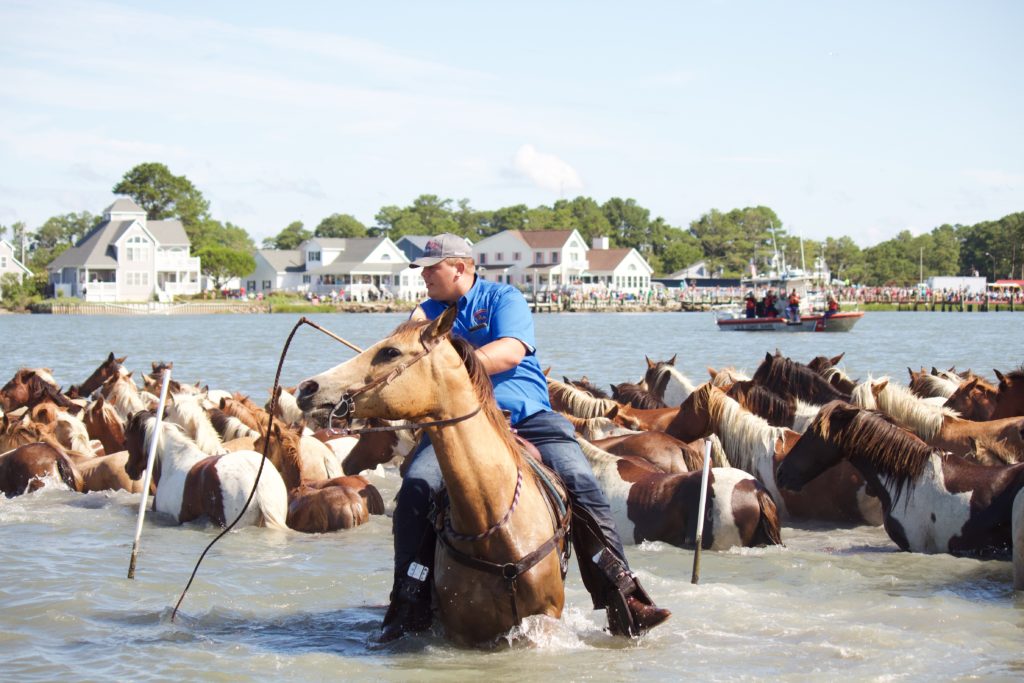
“We start hollering and cracking our whips. It’s just pure joy.”
— Hunter Leonard
I reach Hunter Leonard later by phone. He’s affable and forthcoming, well suited to another family calling, tourism. He and his wife run Cowboy Cruise Company, which offers pony tours and aquaculture tours of their small shellfish farm. (Granddad Donald opened a Chincoteague landmark, the Refuge Inn, and Hunter’s uncle also ran tour boats.)
Although he enjoyed boating from an early age, “I never grew up riding,” Hunter says. “I turned eighteen and I saddled up.” He’s been a cowboy since and is now a licensed captain, sharing his knowledge of Chincoteague ponies, their personalities and pedigrees with his passengers.
Ponies are branded with their birth years, but they weren’t formally named until about 30 years ago, he says. Some bidders wanted to buy and name ponies but let firefighters retain ownership so the horses could remain with the herd. The “buyback” program has been a roaring success, boosting pony prices and fire company revenue while allowing purchasers to receive tax breaks.
Riptide was a buyback, and aptly named. “He’s very aggressive when it comes to his women,” Hunter explains. No kidding.
At day’s end, Bowden and I walk through a corral holding Himself and maybe a dozen other ponies. Suddenly, another stallion sets Riptide off. Ears flattened, he races around the corral’s perimeter, thudding so close that Bowden pushes me toward a fence and shields me with her body three times before we can reach her truck. Misty may be these ponies’ adorable symbol, but Riptide embodies their feral spirit, too.
Before Covid, only World War II interrupted Chincoteague Fire Company’s pony pageant (also for two years). The pandemic moved the auction online, establishing a record for a single pony bid ($28,250) in 2020 and record total sales ($416,950) in 2021. But Bowden estimates those missing years also cost firefighters hundreds of thousands in revenue, plus incalculable memories.
“They have no idea how important they are to this island,” she says of Assateague’s ponies and their celebrated swim. “It’s such a sacred tradition for all of us.”
Come July 27, Saltwater Cowboys will once again herd their revered charges south to Pony Swim Point, where—when the tide is totally slack—they’ll swim 200 yards to Chincoteague, cheered by thousands of shoreline spectators and hundreds of boaters.
“We start hollering and cracking our whips. It’s just pure joy,” Hunter Leonard says of the exuberant-yet-bittersweet moment. “It’s the culmination for our whole year. You don’t see many of us cry,” he says. “You won’t.”
Unless, maybe, you look real closely.
The 2022 Pony Swim and Auction will be held July 27 & 28. The north and south herds will be rounded up the weekend prior, July 23 & 24. Find the complete schedule at chincoteaguechamber.com/pony-event-schedule/

